
Julian returns to a discussion of the tumultuous times at the border between England and Scotland during the Tudor period with his talk “Border Reivers & A Tudor Curse”
[Read More...]
Julian returns to a discussion of the tumultuous times at the border between England and Scotland during the Tudor period with his talk “Border Reivers & A Tudor Curse”
[Read More...]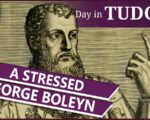
On this day in Tudor history, 11th November 1534, Philippe de Chabot, Seigneur De Brion and Admiral of France, landed on English soil. The purpose of the diplomatic mission he was leading was to renew Anglo-French relations.
George Boleyn, Lord Rochford, brother of Queen Anne Boleyn, had been put in charge of meeting the admiral and escorting him on his journey from the south coast to London, but it was no easy task. The admiral did not make things easy at all, and George was rather stressed about the situation.
Find out what happened, and how and why the ambassador’s visit was bad news all round for the Boleyns, in this talk…
[Read More...]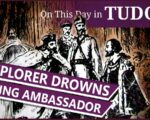
On this day in Tudor history, 10th November 1556, English explorer and navigator, Richard Chancellor, was killed. Chancellor is known as being the first foreigner to enter the White Sea and to establish relations with Russia and Tsar Ivan IV, or Ivan the Terrible.
Chancellor was sadly drowned after saving the Russian ambassador, Osip Napeya, when their ship, The Edward Bonaventure, was wrecked just off the Aberdeenshire coast of Scotland.
Find out about Richard Chancellor’s life, career and sad end in this talk…
[Read More...]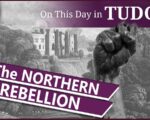
This day in Tudor history, 9th November 1569, is the traditional date given for the start of the only major armed rebellion of Elizabeth I’s reign. It’s known as The Northern Rebellion or Rising of the North or Revolt of the Northern Earls.
Northern earls Charles Neville, 6th Earl of Westmorland and Thomas Percy, 7th Earl of Northumberland, led this uprising against Elizabeth I, seeking to depose her, replace her with Mary, Queen of Scots, and restore Catholicism.
But what happened?
Find out about the 1569 Northern Rebellion and the fate of the Northern Earls in this talk…
[Read More...]
On this day in Tudor history, 7th November 1485, Henry VII’s first parliament attainted King Richard III and his supporters.
As well as Richard, who was referred to as Richard, late Duke of Gloucester, and a usurper, the list of those attainted for their treason in fighting against the king at Bosworth included the late John Howard, 1st Duke of Norfolk, and his son, the Earl of Surrey.
Find out who else was included and whether Parliament’s actions were unusual, in this talk…
[Read More...]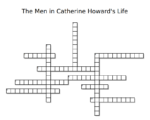
In celebration of the publication of this month’s expert talk – Gareth Russell on the men in Catherine Howard’s story – I thought I’d test you on your knowledge of the men in her life and story.
How much do you know about Catherine Howard and the men in her story?
Test yourself now!
[Read More...]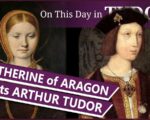
On this day in Tudor history, 6th November 1501, Catherine of Aragon, daughter of Ferdinand II of Aragon and Isabella I of Castile, met her betrothed, Arthur, Prince of Wales, eldest son of King Henry VII, at Dogmersfield in Hampshire.
The couple were actually already married by proxy, but had never met, and Catherine had only just arrived in England.
Find out more about the lead-up to Catherine of Aragon and Arthur Tudor’s meeting on 6th November 1501, including Catherine’s journey from Spain to England, how their meeting went and what happened next, in this talk…
[Read More...]
Today is, of course, the anniversary of the discovery of the Gunpowder Plot on 5th November 1605.
It may have been a plot to kill King James I, and so a Stuart plot, but it had its roots in Elizabeth I’s reign.
You can find out more in the video and resources below:
[Read More...]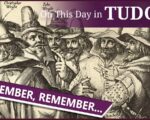
Today is the anniversary of the discovery of Gunpowder Plot conspirator, Guy Fawkes, and 36 barrels of gunpowder in a cellar beneath the Palace of Westminster on the night of 4th/5th November 1605. The plotters were planning to blow up the Houses of Parliament on the opening of Parliament and assassinate the king, his government and leading bishops and nobles.
But why and what has this event in James I’s reign got to do with Tudor history?
Well, a lot, because the Gunpowder Plot had its roots in Elizabeth I’s reign.
Find out more about the Gunpowder Plot, and those involved, in this talk…
[Read More...]
This week’s Friday video is a review of Tudor and Jacobean Jewellery by Diana Scarisbrick.
[Read More...]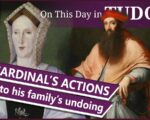
On this day in Tudor history, 4th November 1538, Henry Pole, 1st Baron Montagu, his brother-in-law, Sir Edward Neville; Henry Courtenay, Marquis of Exeter; Courtenay’s wife, Gertrude Blount, and the couple’s son, Edward Courtenay, were all arrested for treason and imprisoned in the Tower of London.
Montagu, Neville and Exeter, along with Montagu’s brother, Geoffrey Pole, were accused of plotting with Cardinal Reginald Pole against the king. Margaret Pole, Countess of Salisbury, was also arrested, accused of the same.
But how had it come to this, when Henry VIII had sought Cardinal Pole’s opinion on his marriage and the papacy?
Find out what Cardinal Pole had done to upset the king, and what happened to his family and friends as a result, in this talk…
[Read More...]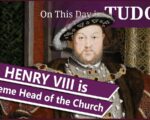
On this day in Tudor history, 3rd November 1534, Parliament passed the First Act of Supremacy, establishing King Henry VIII’s supremacy of the English church and rejecting the authority of the pope.
In today’s talk, historian Claire Ridgway shares what the act said and explains that it didn’t actually make him head of the church, just confirmed the fact, and goes on to share the oath that people had to take and what it meant if they refused.
It was an important act in the break with Rome and the English Reformation.
[Read More...]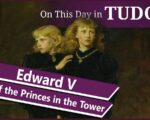
On this day in history, 2nd November 1470, the feast of All Souls, King Edward V was born at Westminster Abbey, London. Young Edward was King of England for just 2 months in 1483 before he disappeared.
The events of his short life, his short reign and how it ended, are linked to the Tudors because Henry Tudor returned from exile to challenge King Richard III, who had, of course, taken the throne from Edward V.
Find out about Edward V’s life and how he came to be one of the famous Princes in the Tower, in this talk…
[Read More...]On this day in Tudor history, 1st November 1527, the feast of All Saints, William Brooke, 10th Baron Cobham, courtier and diplomat, was born.
Cobham was a close friend of William Cecil, Baron Burghley and Elizabeth’s I’s chief advisor, so Cobham became powerful in Elizabeth's reign, serving her in a number of important offices. And, this baron was able to escape charges of treason twice thanks to the influence of his friends and patrons.
Find out more about Cobham's life, career, and brushes with trouble, which included links with Wyatt's Rebellion and the Ridolfi Plot, in this talk...
[Read More...]
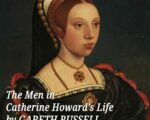
Learn what is true, false and open for interpretation about the men in Queen Catherine Howard’s life and eventual downfall with Gareth Russell’s amazing expert talk on the Dukes, Deceivers and Disappointments in Catherine’s life.
[Read More...]
On this day in Tudor history, 31st October 1537, Lord Thomas Howard, second son of Thomas Howard, 2nd Duke of Norfolk, died while imprisoned in the Tower of London. He was about twenty-five years of age at his death.
How did this son of the 2nd Duke of Norfolk and brother of the 3rd Duke of Norfolk end up dying in the Tower?
Well, he fell in love with the wrong woman? He had become secretly betrothed to King Henry VIII’s niece, Lady Margaret Douglas.
Find out more about Lord Thomas Howard, his relationship with Lady Margaret Douglas, and what happened to them both, in this talk… Oh, and Margaret really didn’t learn her lesson!
[Read More...]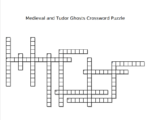
This week, I thought I’d test your knowledge of medieval and Tudor ghosts in a fun crossword puzzle.
Simply click on the link or image to open and print out…
[Read More...]
On this day in Tudor history, 30th October 1600, Queen Elizabeth I refused to renew Robert Devereux, 2nd Earl of Essex’s monopoly on sweet wines, saying that “an unruly horse must be abated of his provender, that he may be the easier and better managed.”
It may not sound like a major event, but it was for Essex and it drove him to desperation and, ultimately, to the scaffold.
Why? What was going on? How could the queen’s refusal to renew this monopoly lead to Essex’s undoing?
Find out what was happened in 1600 and what happened next with the queen and her favourite, in this talk…
[Read More...]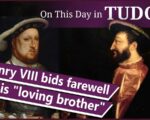
On this day in Tudor history, 29th October 1532, King Henry VIII bid farewell to his “loving brother”, his French counterpart, King Francis I.
The two kings had enjoyed each other’s company at Calais and Boulogne, and Henry VIII was pleased with their meetings. In fact, things had gone so well that Henry VIII decided to marry Anne Boleyn!
Find out more about their farewell, and what had happened during the trip, in this talk…
[Read More...]
As this weekend is Halloween, the beginning of Hallowtide, I thought I’d share these resources from the archives as our “Friday video”, or rather videos!
[Read More...]
Here’s the transcript of our live chat with Natalie Grueninger over the weekend. We had a very interesting and unusual chat about Elizabeth of York, and we certainly learned a lot.
[Read More...]On this day in Tudor history, 28th October 1570, Ivan IV of Russia, known commonly as Ivan the Terrible, wrote a rather rude letter to Queen Elizabeth I.
Ivan was upset with Elizabeth’s reaction to his idea of a political alliance, an agreement to help each other if their lives were in danger, and wrote the letter while he was still angry. They were words that must have made Elizabeth see red for a while, but she managed to write a calm reply to him.
Find out exactly what Ivan the Terrible and Elizabeth I wrote to each other, and how they came to be corresponding in the first place, in this talk…
[Read More...]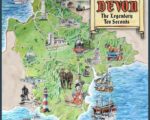
Tudor and history enthusiast and songwriter, Ian Churchward, has sent us a link to his song about Perkin Warbeck on his new “Songs About Devon” album. It’s something a bit different and so we thought we’d share it here for you to listen.
[Read More...]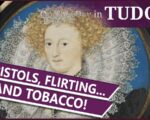
On this day in Tudor history, 27th October 1561, Mary Herbert (née Sidney), Countess of Pembroke, writer and literary patron, was born at Tickenhall, near Bewdley in Worcestershire. She was the sister of the poets Sir Philip Sidney and Robert Sidney, Earl of Leicester, was a writer herself and an extremely talented lady, and she also lived life to the full.
After her husband died, she had fun shooting pistols, flirting, taking tobacco and dancing. A fun lady!
Find out more about this gifted Tudor woman, who was as beautiful as she was talented, and whose work was praised, and used, by men such as Shakespeare.
[Read More...]
On this day in Tudor history, 26th October 1536, the rebels of the Pilgrimage of Grace halted at Scawsby Leys near Doncaster, where they met crown troops. The rebels were said to number around 30,000 and the crown’s army was only a fifth of the size, but the rebel leader, lawyer Robert Aske, chose to negotiate rather than fight.
Why, when they could well have won?
Well, one Tudor chronicler puts it down to rain. You can find out more about this meeting, how rain put a stop to the rebels’ plans, and what happened next between the Pilgrimage of Grace rebels and Henry VIII, in this video…
[Read More...]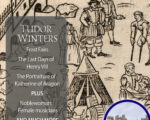
What a wonderfully interesting magazine we have for you this cold winter month. Hopefully, you’re able to stay wrapped up warm while you enjoy the latest copy of Tudor Life Magazine
[Read More...]Today, 25th October, is a feast day which was celebrated in medieval and Tudor times – the feast of Saints Crispin and Crispinian, martyrs of the Early Church and the patron saints of cobblers.
Find out more about these saints, how their feast day became linked to an important English victory over the French, how it was marked, and why these saints are linked to Faversham in Kent, in this talk…
[Read More...]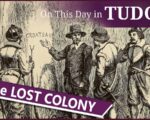
On this day in Tudor history, 24th October 1590, John White, the governor of the Roanoke Colony, returned to England after failing to find the lost colonists, which included his daughter, Ellinor (Elenora), his son-in-law, Ananias Dare, and his granddaughter, Virginia Dare.
But what happened to these colonists and what did the word CROATOAN carved onto a post mean?
Find out all about the Roanoke Colony and the theories regarding the disappearance of all 115 people, including the very latest research, in this talk…
[Read More...]